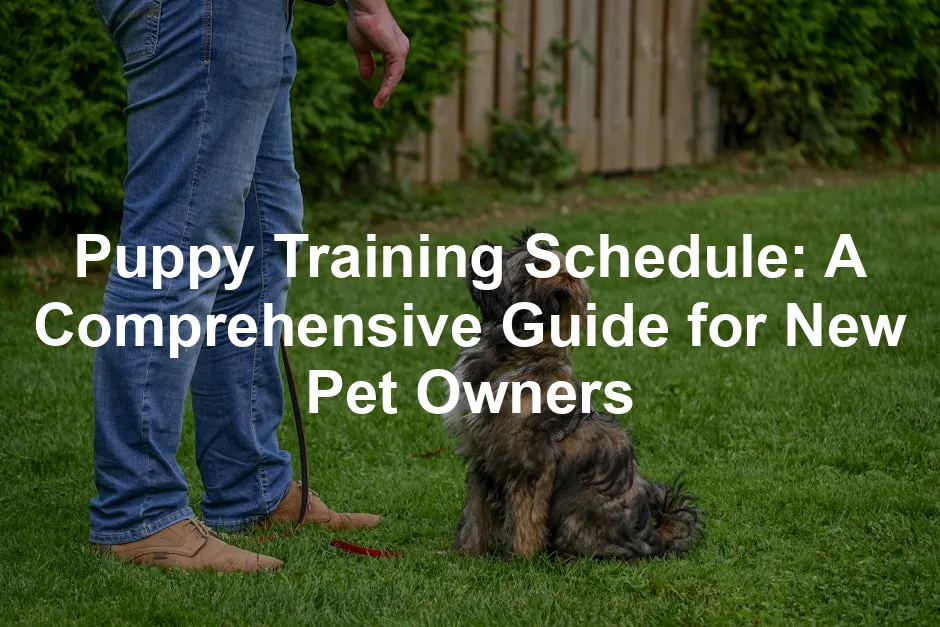Importance of Starting Early
Starting your puppy’s training journey as soon as they arrive home is vital. Puppies are most receptive to learning between 8 to 16 weeks of age. This period is crucial for developing good habits and behaviors. If you wait too long, you risk missing out on this critical learning phase. Research shows that approximately 80% of behavioral problems stem from insufficient training during these early weeks. Early training helps to prevent these issues by instilling obedience and good manners from the start. Socialization plays a key role during this time. Exposing your puppy to various environments, sounds, and people helps them grow into well-adjusted adults. It reduces fear and anxiety, making everyday situations more manageable.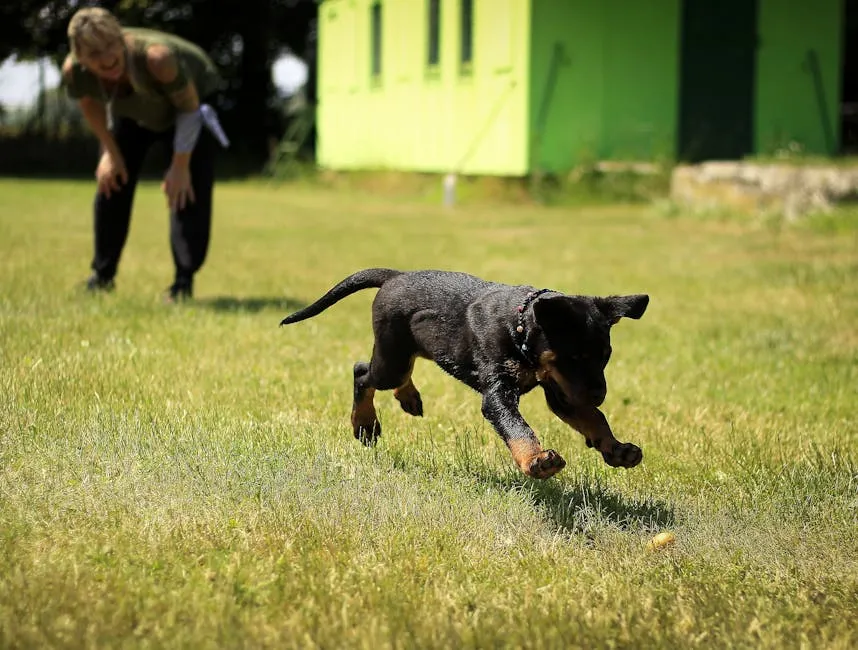
Components of a Training Schedule
Establishing a daily routine is essential for your puppy’s development. A well-structured schedule includes key activities like feeding, potty breaks, socialization, and playtime. Consistency is crucial; it helps your puppy feel secure and understand expectations. Start your day with a morning potty break. Afterward, enjoy breakfast together, followed by playtime. Engaging in these activities creates a predictable pattern your pup will learn to anticipate. This predictability fosters a sense of safety and helps build confidence. Incorporate training sessions into your daily routine. Short, focused training periods can occur during play or meal times. For example, ask your puppy to sit before serving their food. This method reinforces training while making it fun. With the right tools like the Dog Training Clicker, you can make this process even more effective by marking the right behaviors instantly.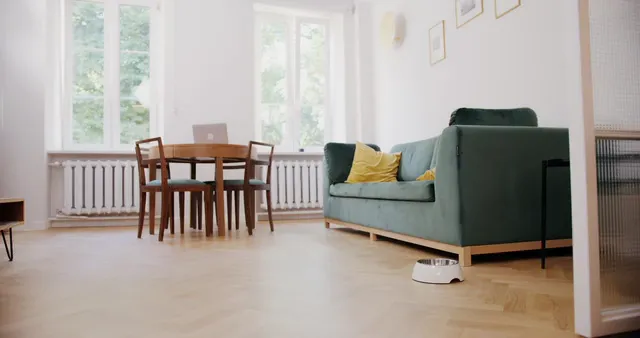
Week-by-Week Training Schedule
Weeks 8-10: The Basics
During the crucial early weeks, focus on basic commands. Teaching “Sit” and “Come” lays the groundwork for future training. These commands help establish communication between you and your puppy. Start potty training and introduce crate training for comfort and security.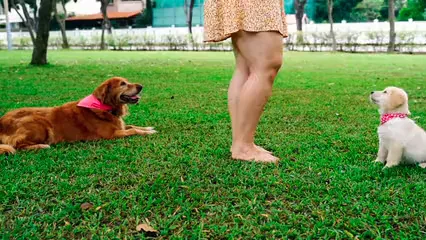
Weeks 10-12: Building on Basics
As your puppy matures, expand on their skills. Introduce advanced commands like “Stay” and “Down.” This stage is also vital for socialization. Expose your puppy to new people and environments to help them adapt. Positive experiences during this time will encourage confidence. Consider using a PetFusion Ultimate Dog Bed for a cozy and secure sleeping environment that aids in their overall comfort and training.Weeks 3-4 Months: Continued Training
By this age, introduce leash training and impulse control. Start practicing walking on a leash and teach your puppy to wait before going for walks. Reinforce commands learned earlier, ensuring they respond consistently. This phase is about consolidating their skills while having fun.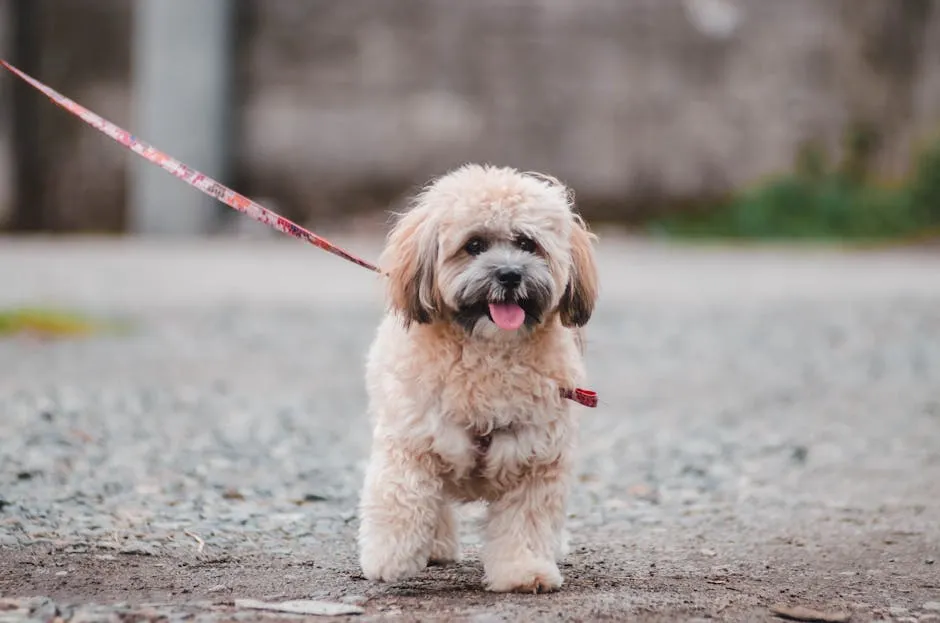
4-6 Months: Advanced Skills
In this stage, your puppy should be comfortable in various environments. Work on outdoor training with distractions, such as other dogs and people. This helps your puppy remain focused despite the chaos. Continue socializing with other dogs to build their confidence. A Outward Hound Dog Life Jacket is perfect for water outings, ensuring safety while they explore.6 Months – 1 Year: Refinement
As your puppy approaches adulthood, refine all commands and behaviors. Consistently reinforce what they’ve learned. Gradually introduce more complex tasks, like tricks or agility exercises. This ongoing training will keep their mind sharp and strengthen your bond.
Training Techniques and Methods
Training your puppy can be a rewarding experience when using the right techniques. Positive reinforcement is the most effective method. It encourages good behavior by rewarding your puppy with treats, praise, or playtime. This approach helps your puppy associate good behavior with positive outcomes. For more on this technique, check out our post on effective positive reinforcement techniques for stubborn dogs.
Short and engaging training sessions work best for young pups. Aim for 5-10 minutes of focused training several times a day. Puppies have short attention spans, so keep sessions fun and lively. Mixing commands and activities keeps your puppy interested and eager to learn. Try using a Dog Training Treat Pouch to keep your treats handy and accessible during training.Understanding positive reinforcement techniques can greatly enhance your puppy training experience. Learn more about effective positive reinforcement techniques for stubborn dogs.
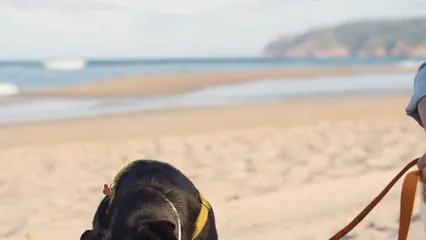
Common Challenges in Puppy Training
Puppy training can present various challenges. Common issues include barking, chewing, and potty accidents. Recognizing these obstacles early on is crucial for effective training. Addressing them promptly can prevent them from becoming habitual behaviors.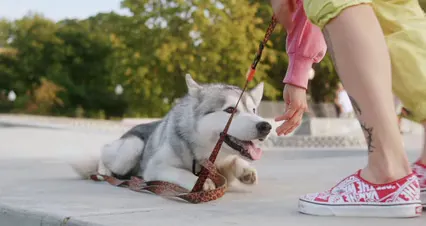
The Role of Socialization
Socialization is crucial for your puppy’s development. It shapes their behavior and helps them become well-adjusted adults. A well-socialized puppy is less likely to develop fear or aggression, making life easier for both of you.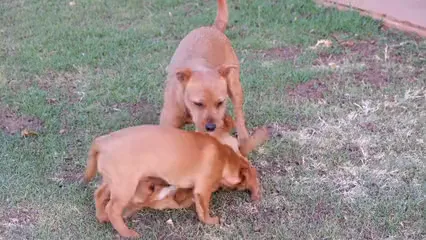
Conclusion
Having a structured puppy training schedule is essential. It sets the foundation for your puppy’s behavior and learning. Early and consistent training leads to long-term benefits. You’ll enjoy a well-behaved companion who understands boundaries and commands.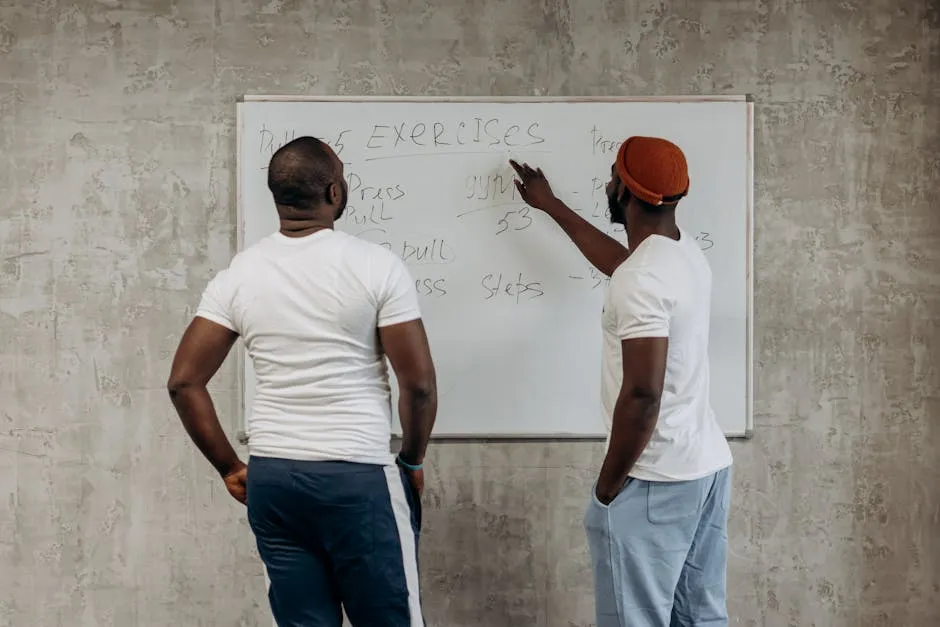
FAQs
When should I start training my puppy?
Starting training early is essential. Begin as soon as you bring your puppy home. Puppies are most receptive to learning between 8 to 16 weeks of age. During this time, they absorb information quickly. If you wait too long, you may miss out on this crucial developmental phase. Starting early fosters good habits and behaviors that last a lifetime.
What are the essential commands to teach my puppy?
Basic commands are key for your puppy’s training. Start with “Sit,” “Come,” and “Stay.” These commands lay the foundation for good behavior. Teaching “Down” and “Leave it” is also beneficial. Focus on one command at a time to avoid confusion. Consistent practice will help your puppy master these essential skills.
How long should training sessions be?
Keep training sessions short and engaging. Aim for 5 to 10 minutes for young puppies. Their attention spans are limited, so multiple short sessions work best. Gradually increase session length as your puppy grows. Consistency is important; practice several times throughout the day to reinforce learning.
What if my puppy shows resistance to training?
Resistance can be frustrating but is common. If your puppy resists, try to identify the cause. It may be due to distractions, fatigue, or lack of interest. Adjust your training approach by making sessions more fun. Use treats and praise to motivate them. If resistance persists, consider seeking professional help to get back on track.
How do I handle potty training accidents?
Potty training accidents happen, especially in the early weeks. When they occur, avoid punishment. Instead, clean the area thoroughly to remove odors. Take your puppy outside frequently, especially after meals and naps. Reward them for going outside to reinforce good behavior. Consistency and patience are key to successful potty training.
Can I socialize my puppy too much?
Socialization is crucial, but moderation is key. Exposing your puppy to various environments and experiences helps them adjust. However, over-socialization can lead to anxiety. Monitor your puppy’s reactions and avoid overwhelming situations. Gradually introduce them to new experiences, allowing them to build confidence at their own pace.
All images from Pexels

